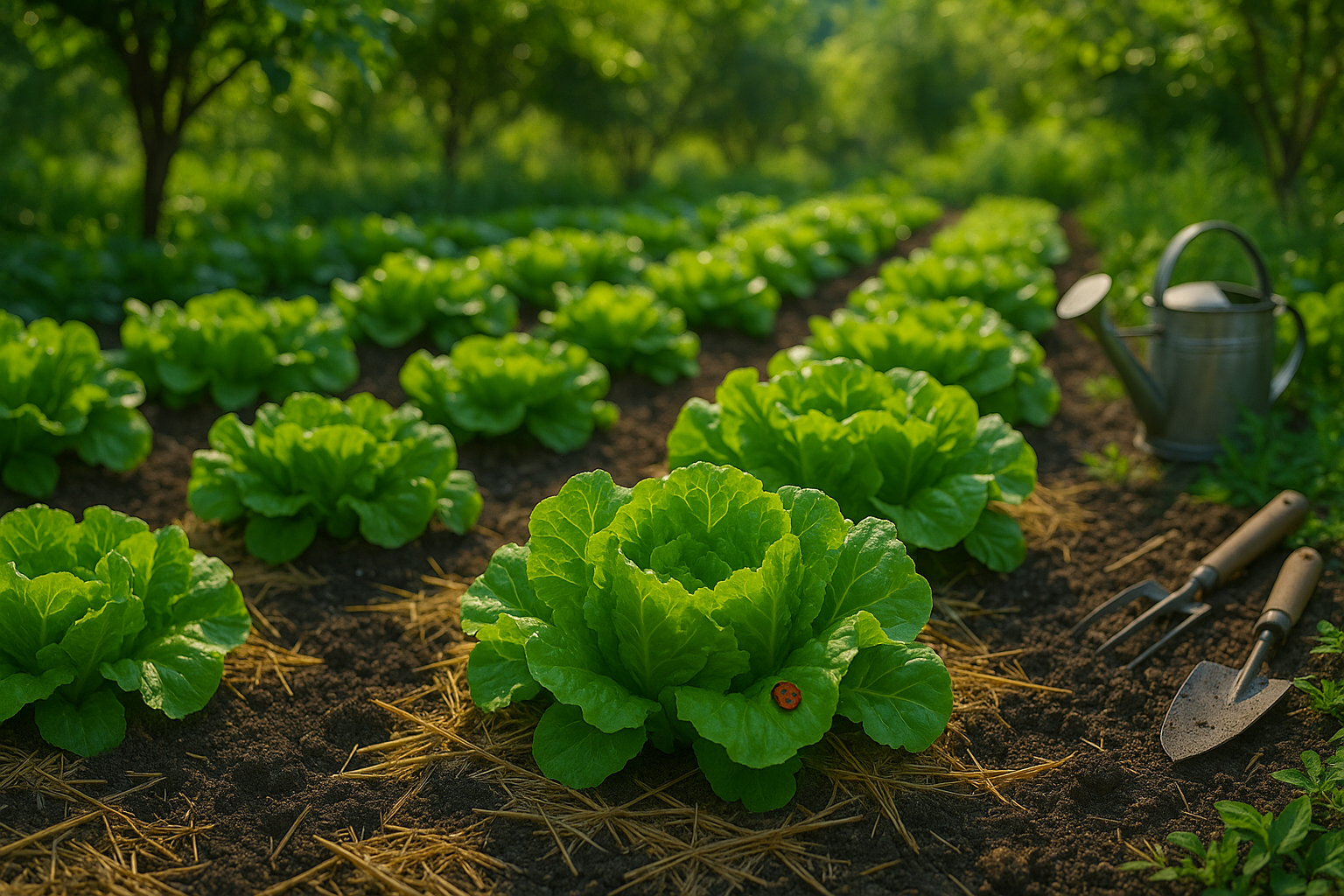Why Mulch Matters for Lettuce Growth
Lettuce is a cool-season crop that thrives with steady moisture, cool roots, and minimal weed competition. Because lettuce has shallow roots, it is sensitive to fluctuations in soil moisture and temperature. If the soil dries out or heats up too quickly, lettuce can become stressed, leading to bitter leaves or premature bolting—when the plant rushes to produce flowers and seeds.
This is where mulch becomes an invaluable tool in the garden. Applying a layer of organic mulch—such as straw, shredded leaves, or grass clippings—helps lock in soil moisture, reducing how often you need to water and preventing the soil from drying out quickly after a hot day. Mulch also acts as a natural insulator, moderating soil temperature and keeping lettuce roots cool during sudden warm spells. This extends the growing season and improves the overall quality of your lettuce.
Moreover, a thick layer of mulch suppresses weeds by blocking sunlight, saving you hours of hand-weeding and reducing competition for vital nutrients. Research supports these benefits: a study by the University of California found that mulched lettuce plots yielded larger, healthier heads and had significantly fewer weeds compared to bare soil. Home gardeners often report fuller, crisper leaves when using mulch—especially during unpredictable weather.
For anyone growing lettuce, mulching isn’t just a time-saver—it’s a proven way to harvest healthier, tastier greens all season long.
Choosing the Right Mulch for Lettuce
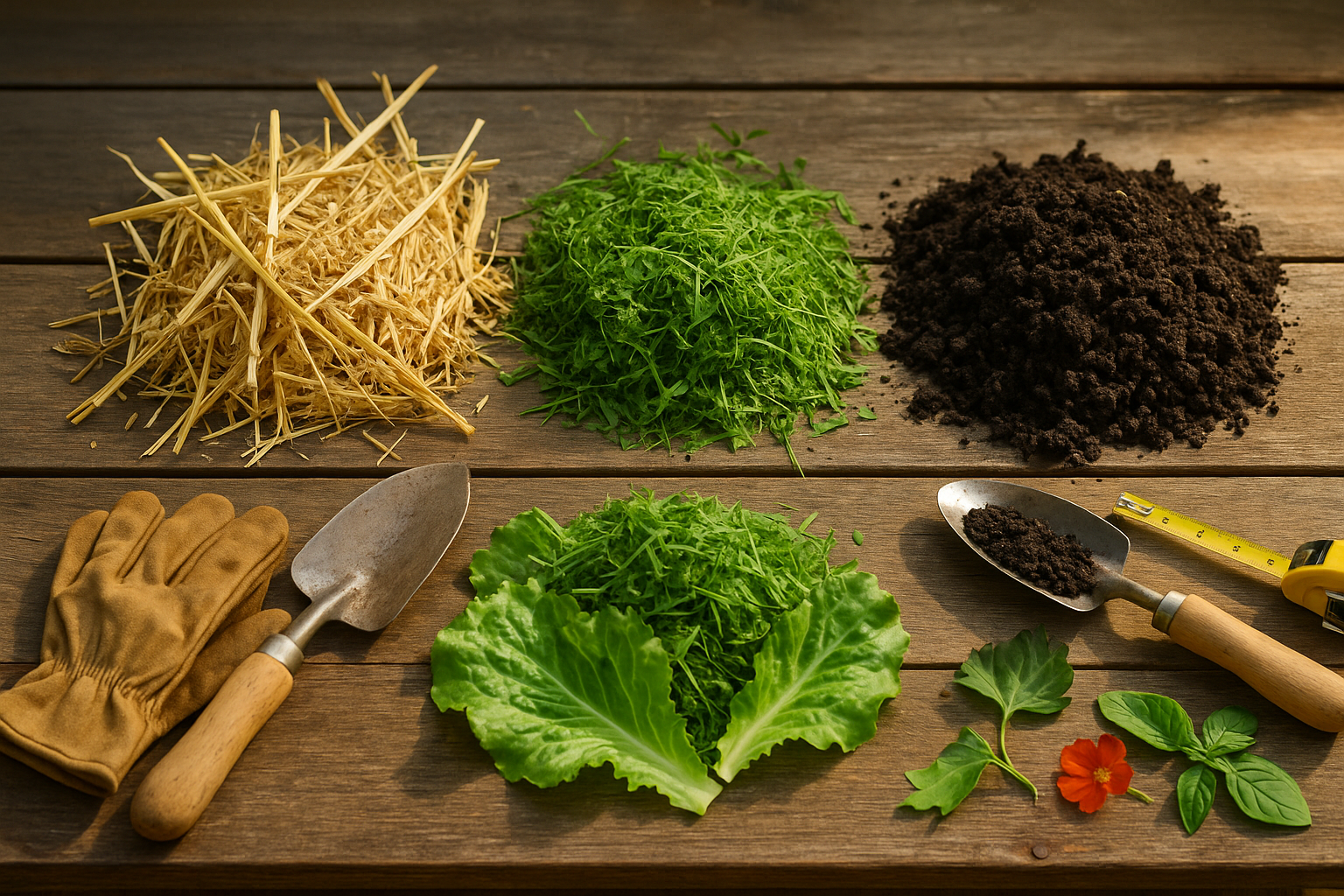
When it comes to growing crisp, healthy lettuce, the type of mulch you choose can greatly impact your harvest. Organic options like straw, grass clippings, and compost are popular because they naturally enrich the soil as they break down and help retain moisture—key for lettuce since its roots dry out easily.
Straw is light and keeps soil cool, making it ideal for lettuce in warmer climates; just be sure it’s seed-free to avoid sprouting weeds. Grass clippings add nitrogen but must be free of pesticides and spread in thin layers to prevent matting. Compost offers the dual benefits of mulching and fertilizing, perfect for hungry greens like lettuce, but it can harbor diseases if not well-aged.
On the other hand, inorganic mulches like plastic sheets and landscape fabric focus more on weed control and water retention. Black plastic warms the soil, which can be problematic in hot regions, causing bitter-tasting leaves. Lighter plastics or fabric work better in cooler climates by protecting plants from spring chills. However, these synthetic mulches don’t improve soil health and can trap excess moisture, increasing the risk of root rot or fungal diseases.
If your garden experiences heavy rain or you live in a hot area, opt for organic mulches and stick to lighter materials like straw. In cooler or drier spots, landscape fabric or light-colored plastics can help extend your lettuce-growing season. Always ensure your mulch is clean and free from potential contaminants, especially when growing crops to be eaten raw, like lettuce.
Preparing Lettuce Beds for Mulching
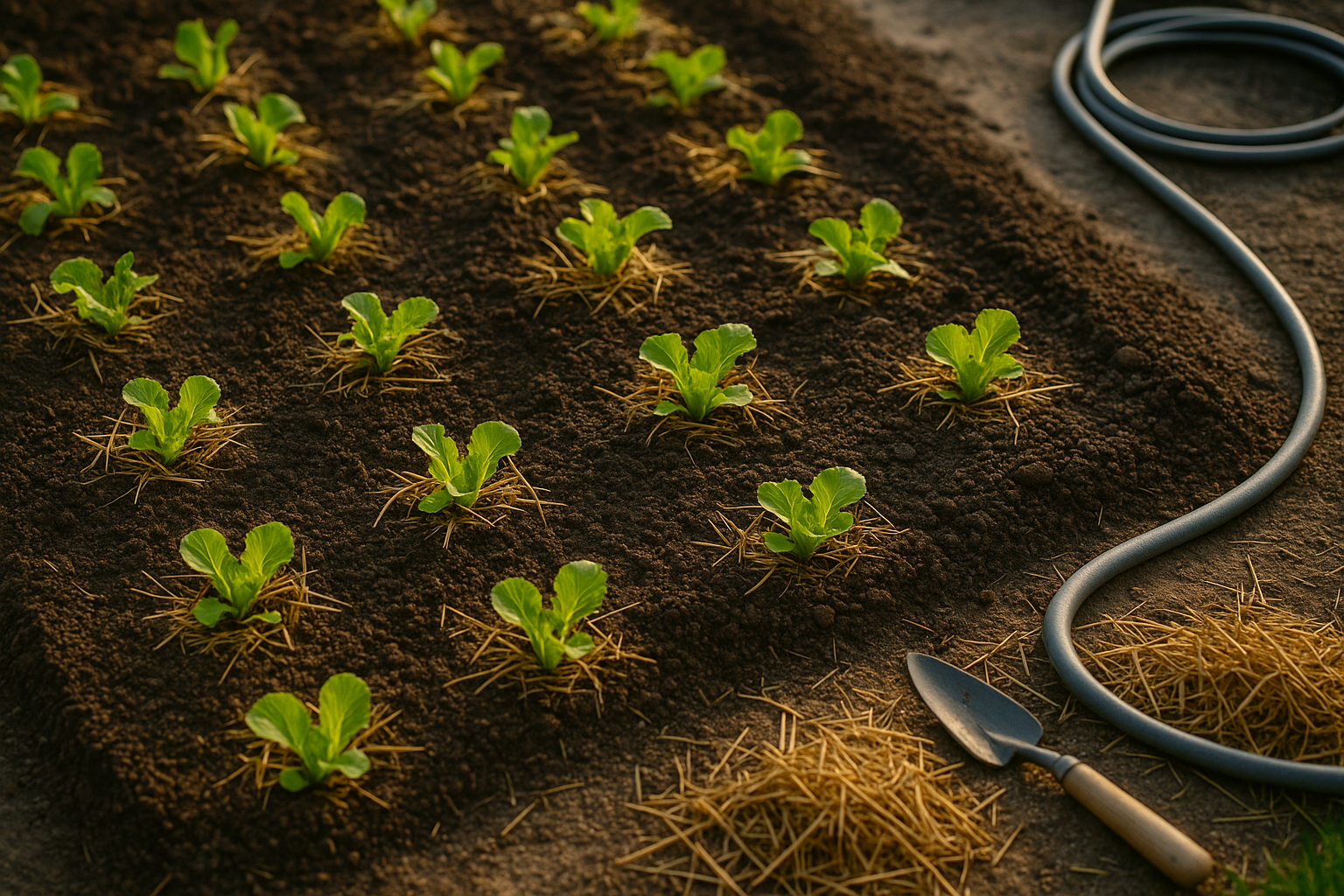
Preparing your lettuce beds for mulching is simple but requires attention to timing and technique for the best results. Ideally, apply mulch right after transplanting lettuce seedlings or once direct-sown seeds have sprouted and developed their first true leaves—this helps avoid smothering fragile young plants.
Start by thoroughly clearing the bed of weeds, roots, and debris so the lettuce won’t have to compete for nutrients or space. Next, water the soil well to provide moisture that will be trapped by the mulch, creating a cool, damp environment that lettuce loves.
Consider mixing in compost or a slow-release, balanced fertilizer to boost soil fertility, since lettuce is a fairly heavy feeder. When applying mulch, choose organic materials like straw, shredded leaves, or grass clippings, spreading a loose 1- to 2-inch layer around the plants.
Be careful not to pile mulch directly against the stems; leave a small ring around each seedling or transplant to allow airflow and prevent rot. For row plantings, mulch between rows but keep a bare strip immediately around the emerging lettuce. This approach keeps the soil moist and weed-free while letting your lettuce thrive without the risk of being buried.
Step-by-Step Guide to Mulching Lettuce Beds
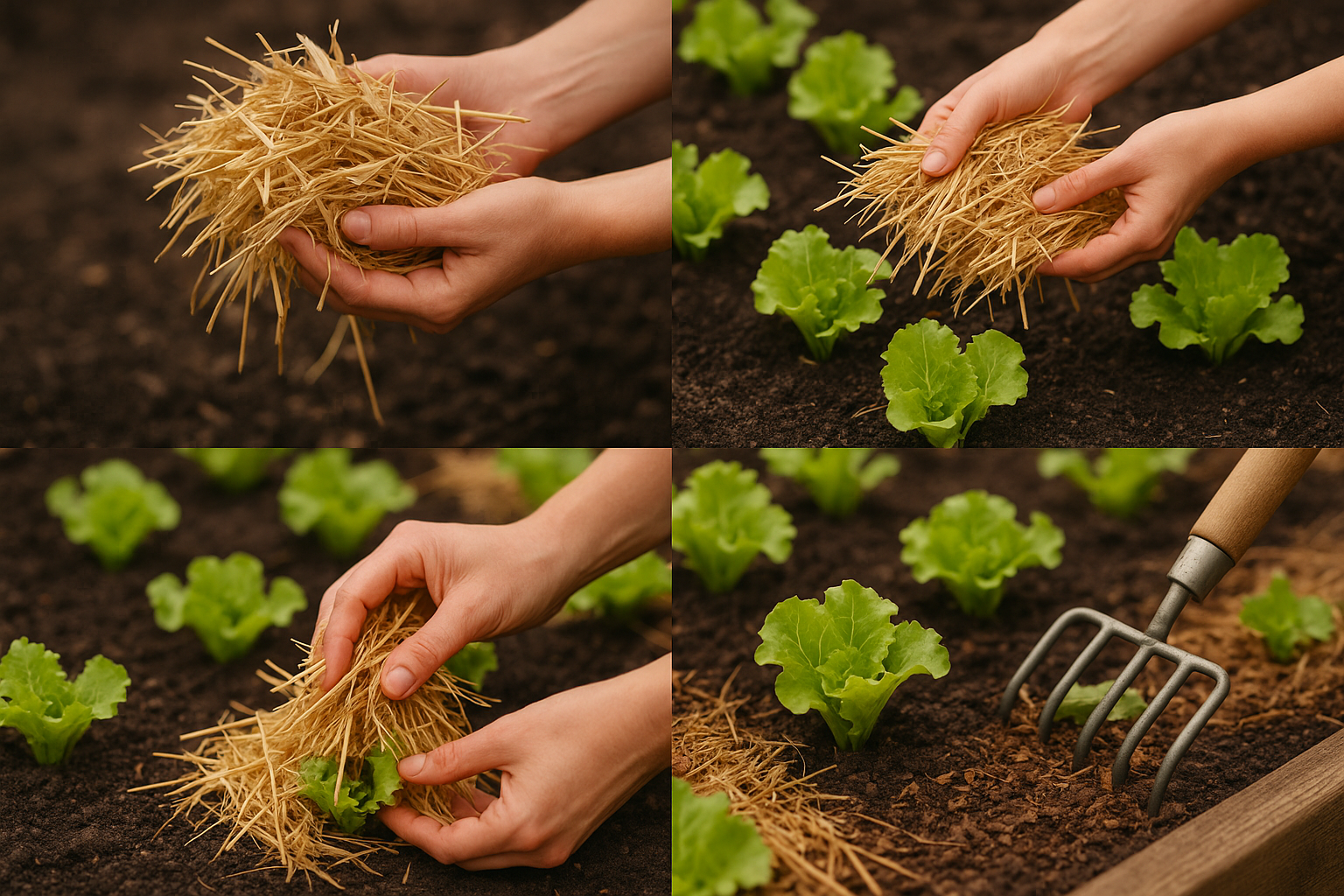
Mulching lettuce beds is a simple process that offers big benefits, like retaining moisture and suppressing weeds. However, it’s important to get the details right. Start by choosing your mulch—clean straw or shredded leaves are both excellent, natural options that break down to enrich the soil.
When spreading mulch, aim for a layer about 1 to 2 inches thick. Too little won’t suppress weeds effectively, but piling it too deep (over 2 inches) can block airflow and trap excess moisture, creating a haven for pests or mold. Be sure to keep a mulch-free zone of about an inch around the base of each lettuce plant because direct contact can cause the stems to rot.
For straw, gently shake handfuls across the soil, allowing it to fall loosely and evenly. Then, use your hands to pull it back from the stems. Shredded leaves can be distributed with a light raking motion and then tamped down lightly to keep them from blowing away, again steering clear of the stems.
Throughout the growing season, check your beds every couple of weeks. You may need to top up the mulch if it thins out or after heavy rain. As temperatures rise or humidity spikes, lift a small patch now and then to inspect for signs of mold or unwanted pests like slugs.
If you notice dense, damp patches or pests, remove the affected mulch and spread a thin, fresh layer. With regular attention, mulching lettuce beds is a low-fuss task that pays off with healthy plants and easier garden maintenance.
Common Mistakes to Avoid When Mulching Lettuce
When mulching lettuce, it’s easy to make mistakes that can slow growth or even damage your crop. One common problem is over-mulching—using too thick a layer, which restricts airflow to the soil and creates overly damp conditions. This can suffocate lettuce roots or promote fungal diseases like root rot. Aim for a mulch layer about one to two inches thick to retain moisture without smothering the plants.
It’s also crucial to be selective with your mulch materials. Avoid using mulch sourced from treated lawns or beds, as these may carry pesticide residues or weed seeds. Stick with clean, composted straw or untreated grass clippings for the best results.
Pay attention to signs that your mulch is causing trouble:
- If the mulch becomes matted, rake it lightly to fluff it up.
- If you spot slugs or other pests hiding under the mulch, use organic slug traps or diatomaceous earth to keep them at bay.
- Watch for any sudden wilting or yellowing of leaves, which may indicate disease spreading under a poorly managed mulch layer.
By choosing the right mulch and maintaining it properly, you can create healthier lettuce beds and avoid common pitfalls.
Maximizing Lettuce Growth with Mulching Techniques
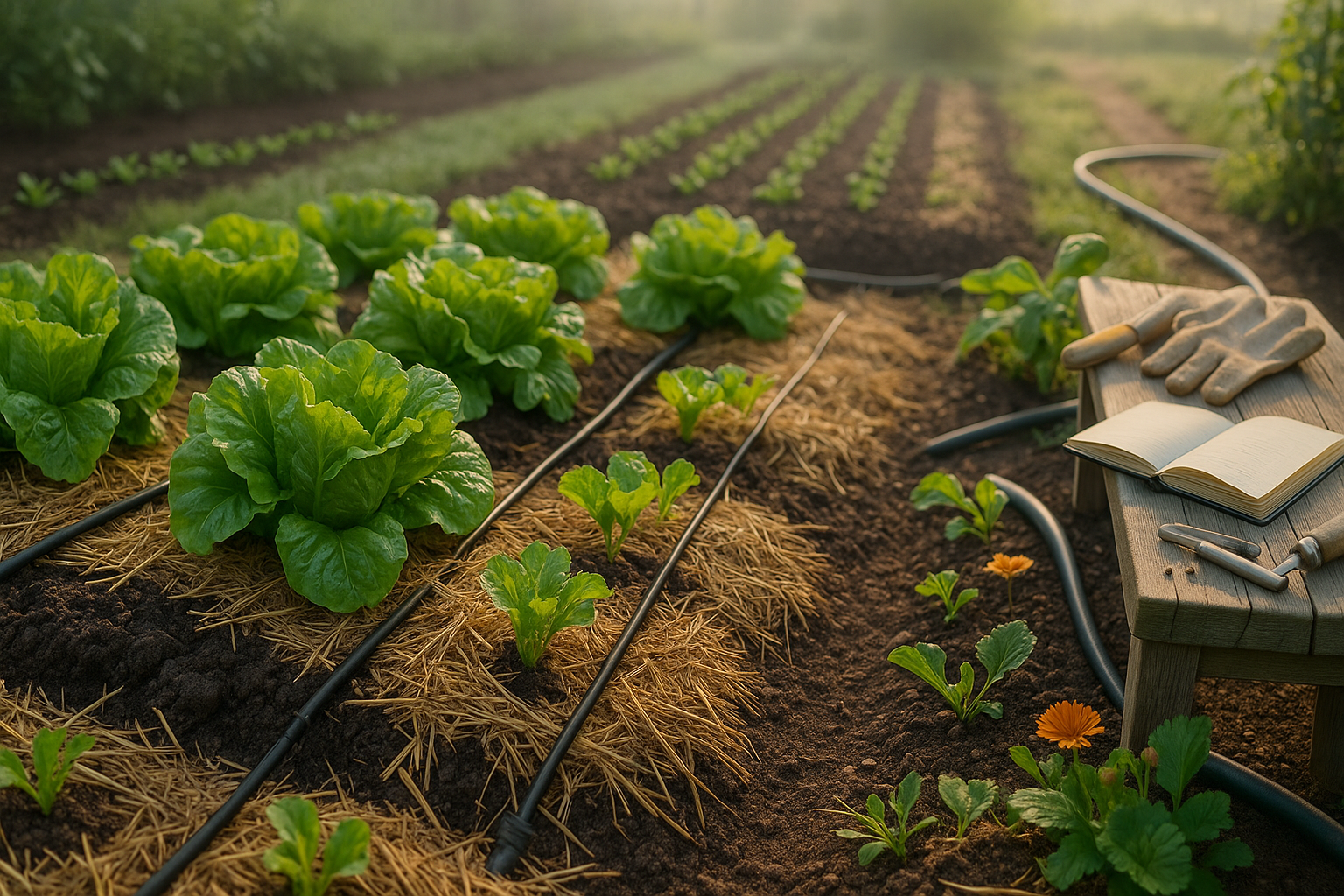
Mulching is a powerful tool for maximizing lettuce growth, but its effectiveness increases when paired with other smart gardening practices. Start by laying down a 1- to 2-inch layer of organic mulch—such as shredded leaves, straw, or compost—directly around your lettuce plants. This not only helps suppress weeds and regulate soil moisture but also keeps the tender, shallow roots of lettuce cool. This is crucial for preventing bitter-tasting leaves and bolting.
For even better results, use drip irrigation beneath your mulch. This system delivers water directly to the root zone, minimizing evaporation and leaf wetness—two major concerns, especially during hot weather or in regions prone to mildew.
Succession planting is also a great companion strategy: instead of sowing all your seeds at once, plant new lettuce every two weeks for a continual harvest, making the most of your mulched beds.
Mixing Mulch Types
Rotate mulch types from season to season—for example, switching between straw, grass clippings, and leaf mulch—or even layer materials. Start with a base of compost for nutrients, then top with straw for moisture control. Combining different mulches can help improve both the soil and pest resistance over time.
Keep a Garden Journal
Most importantly, keep a simple garden journal to track which mulch combinations and practices yield the best results in your local conditions. Over a few seasons, these notes will reveal the best blend of materials and timing for consistently healthy, high-yield lettuce crops.
Frequently Asked Questions About Mulching Lettuce
When mulching lettuce, many gardeners wonder if it’s safe to put mulch directly over the seeds. It’s best to wait until your seedlings are a couple of inches tall before adding mulch—covering seeds right away can smother delicate sprouts and hinder germination.
Once your lettuce is established, a thin layer of straw, shredded leaves, or grass clippings helps retain moisture and block weeds. Refresh the mulch every three to four weeks, especially after heavy rain, to keep it loose and effective.
Concerns about slugs are common: organic mulches like straw can sometimes attract them. To prevent this, keep mulch about an inch away from your lettuce stems and check underneath regularly. You can also sprinkle crushed eggshells around your plants to discourage slugs without resorting to chemicals.
With these simple steps, mulching can help your lettuce thrive, even in a busy backyard garden.
